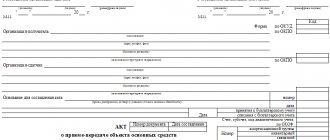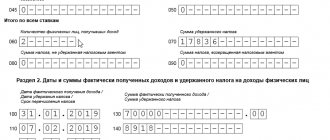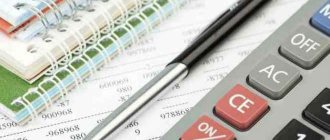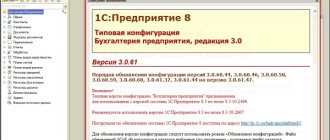The main sign of a successful business is profitability. And it is achieved not only through income growth, but also through cost reduction. Every entrepreneur knows that a significant part of the money earned goes to taxes. Therefore, it is extremely important to approach their payment rationally and use all legal opportunities to avoid unnecessary expenses. One of the largest payments is value added tax, so we will talk about it.
Below we will talk about ways to reduce tax amounts, schemes in which VAT can be avoided at all, as well as the main conditions for the correct optimization of this tax. An important note - our story will be exclusively about legal methods of reducing the tax burden.
Is optimization always necessary?
VAT exemption affects whether it is convenient to work with you.
If you, as the seller, do not charge VAT, then the buyer will not be able to recover the tax. Therefore, if you work mainly with large companies, then without VAT you are less competitive. Losing one or two key customers can be much worse than paying a large VAT. On the other hand, if you pay VAT, then it is beneficial for you to work with suppliers who pay this tax. It is worth working with non-payers if they give a discount comparable to the VAT rate.
One more point: in business there can be both VAT-taxable and non-VAT-taxable areas. Then, to apply tax benefits, you will have to keep separate records. But if the preferential direction is insignificant compared to the entire volume of business, separate accounting may cost more than saving on VAT.
Therefore, when applying optimization schemes, take into account the risks, benefits and reactions of counterparties.
How to avoid paying VAT?
Every time a business entity sells goods or services, the question of paying VAT arises. The desire to avoid it is quite understandable, but not all entrepreneurs take adequate measures for this. Meanwhile, there are effective ways to save on taxes that are absolutely legal and will not raise questions from tax authorities either during a desk audit or during on-site events.
Take advantage of benefits
Let's start with the easiest and safest way to avoid paying value added tax. If you are lucky enough to be one of those for whom the legislator has provided benefits, you will have to do practically nothing to avoid paying VAT. It is enough to confirm that you belong to the category of beneficiaries. Companies such as FIFA, its subsidiaries, national football associations, confederations, suppliers of goods, services and a number of other organizations associated with FIFA are not considered payers of the tax in question.
Transactions with certain categories of goods and services are not subject to VAT. This happens in the following cases:
- When sending postal items abroad.
- For air transportation in some regions, transportation by public urban transport, as well as suburban transport.
- In the case of the sale of certain medical goods and products, the provision of medical services.
- When are funeral services provided?
- When providing educational services.
- In the process of activities of cultural and art institutions.
- When conducting banking transactions.
This is not a complete list of tax-exempt transactions. All categories are given in Article 149 of the Tax Code. If a business entity carries out both taxable and non-VAT-taxable transactions, it is necessary to keep separate records of them.
Apply zero rate
In addition to the automatic exemption of certain transactions from taxation, the law also provides for the possibility of applying a zero rate. Business entities can use it at their discretion or refuse to reset the rate. The list of goods and services for the sale of which a zero rate may be applied is given in Article 164 of the Tax Code.
It is important to know! A catalog of franchises has opened on our website! Go to catalog...
There have been some changes to this procedure since January 2021. An additional category of goods has appeared, on the sale of which you can avoid paying the tax in question. If processing takes place in the territory of a free warehouse, free customs zone or on customs territory, re-export objects are sold without paying VAT. To confirm the right to apply the zero rate, it is necessary to submit relevant documents, in particular a contract on a foreign trade transaction, shipping and transport certificates, as well as a customs declaration. From the beginning of this year, the right to apply a zero rate also became available to companies transporting passengers and baggage by air in the Kaliningrad region.
Get VAT exemption
When a business does not generate huge profits, you can count on a temporary exemption from VAT. This chance is spelled out in Article 145 of the Tax Code. In accordance with it, if the conditions listed below are met, tax may not be paid throughout the year:
- Activities are carried out in the domestic market.
- There is no excise tax on goods sold.
- The quarterly revenue on which tax should be charged is less than 2 million rubles. excluding VAT.
To receive an annual tax exemption, you must submit an application to the tax office and provide copies of issued or received invoices and an extract from the sales ledger. Private entrepreneurs submit an extract from the book of income, expenses and business transactions, and companies submit an extract from the balance sheet. By taking advantage of the exemption, a company or private entrepreneur may not maintain a tax register or file a tax return.
After a year of VAT exemption has passed, you can apply to the tax office again and extend the period for another year. The main disadvantage of this method of getting rid of the obligation to pay tax is the inability to refuse the benefit early. And this may be required if cooperation with a tax-exempt company will be unprofitable for counterparties.
Important: if, after receiving a tax exemption, you continue to issue VAT invoices, you will have to pay this tax and file a return for it.
Hire disabled people
Article 149 of the Tax Code provides for exemption from VAT for organizations that employ disabled people. In this case, the team should primarily consist of such individuals. They must be at least 80 percent of the total number of employees, and if the authorized capital consists of contributions from public organizations of disabled people, then the number of employees with disabilities must be at least 50 percent.
Switch to preferential tax payment regime
If you abandon the general taxation system in favor of one of the preferential ones, you can get rid of the need to pay VAT. The choice of tax payment regime depends on the characteristics of a particular business. Let's look at the conditions under which they are used.
simplified tax system
All business entities that operate on the general taxation system are required to pay value added tax. Therefore, the real way to avoid VAT is to switch to a simplified tax payment regime. However, this method is not available to all business entities, since there are some restrictions on the use of “simplified”. Only companies and private entrepreneurs that meet the following requirements can switch to it:
- The total revenue for six months did not reach 75 million rubles.
- The company has no more than 100 employees.
- The organization does not belong to one of the groups of taxpayers who, according to tax legislation, cannot use the simplified system (Article 346.12 of the Tax Code).
- The legal entity has no branches.
To register the transition to a simplified system, you must submit an application in the established form to the tax service. If all the conditions mentioned above are met, the business entity has the opportunity not to pay VAT and some other taxes during the next calendar year after the application.
Advice: if the business is too large to apply the simplified tax system, that is, the company has more than 100 employees or six-month revenue exceeds 75 million rubles, the situation is not hopeless (you are not doomed to pay VAT). You can reorganize the company by dividing it into several that meet the requirements for profitability and number of personnel required for “simplified” companies.
The benefits of using the simplified tax system are obvious, but do not rush to go to the tax office with an application for the transition. It is worth assessing the negative aspects of changing the tax regime:
- Not all former and potential partners will agree to cooperate with you in a new status if they remain on the common tax system. This is due to the fact that when entering into contractual relations with business entities using the simplified tax system, their tax expenses increase. In this case, to attract counterparties, you can offer a system of discounts.
- Before changing the tax payment regime, we strongly recommend that you resolve the issue with the amounts of tax that are claimed for deduction. Reorganization can be an excellent way out of this situation. The newly formed company will not have to restore VAT amounts and will switch to the simplified tax system without any problems.
If such consequences do not scare you, feel free to switch to the “simplified” approach. It's completely legal and safe. You just need to first find out your tax debts from the tax service and pay them.
Imputation
In addition to the simplified tax system, there are several other taxation regimes under which businesses are exempt from paying VAT. One of them is the tax on imputed income (UTII), or the so-called “imputation”. With this specific regime, the amount of tax payments is determined based on the area in which the business operates and how large its scope is. When calculating UTII, the basic monthly profitability is multiplied by indicators such as the area of the retail premises and the number of employees. The level of income is absent in this formula and does not affect the amount of tax in any way.
Agricultural tax
When choosing the Unified Agricultural Tax (USAT) as a taxation system, business entities operating in the agro-industrial sector should take into account that agricultural tax payers are exempt from paying value added tax until the end of the current year. At the same time, VAT accepted for deduction before the transition to a single agricultural tax is not restored. In a year, that is, from the beginning of 2021, entrepreneurs on the Unified Agricultural Tax will become payers of value added tax, and the transition to this regime to save on VAT will lose its meaning.
Patent system
Only private entrepreneurs can conduct business activities on the basis of a patent. This tax payment regime is not provided for companies. Its essence is that an individual entrepreneur acquires a patent to carry out a certain type of activity, and payment of its cost eliminates the need to pay taxes, including VAT.
Working in special mode
The last resort is not to pay VAT at all. This is possible if you apply a special tax regime: simplified tax system, PSN, unified agricultural tax or UTII (cancelled from 2021). Special regimes also exempt from taxes on property and profits. Instead of several taxes, you pay one and usually at a lower rate. Compare your tax burden across different taxation systems using our free calculator.
Each special regime has its own set of conditions that the business must meet: revenue, cost of fixed assets, participation of other companies in the authorized capital, number of employees.
Some special modes can be combined with OSNO: PSN, UST, UTII. They can also be combined with each other: simplified tax system + UTII, simplified tax system + PSN, simplified tax system + ESKHN. You will have to maintain separate accounting and reporting for each mode.
Sometimes a business is divided into several legal entities or individual entrepreneurs, so that each part operates under its own tax regime. But this method of optimization is dangerous: tax authorities may consider this a fragmentation of the business, recognize the entire direction as a single company operating on OSNO and charge additional taxes (and also impose fines and penalties). And if the arrears exceed 5 million rubles, the tax office may initiate a criminal case under Art. 199 of the Criminal Code of the Russian Federation.
Keep records of exports and imports in the Kontur.Accounting web service. Simple accounting, payroll and reporting in one service
What are the risks of using schemes?
Tax evasion schemes can be legal or illegal. Although even legal methods can be used in such a way that people will become interested in the company. Experts offer optimization, citing successful court decisions, but are silent about losses.
The scheme may work, or it may cause trouble. Of course, in this case, experts promise to solve problems with the Federal Tax Service for additional money, but there are no guarantees.
There is an opinion that tax authorities turn a blind eye to minor offenses and come at the hour when the business reaches large turnover. But it is not exactly. Either way, do you need the extra worry?
Still, the Federal Tax Service is one of the most automated and advanced services in Russia. The tricks of entrepreneurs there are well known.
VAT exemption
Businesses can be exempt from paying VAT on certain transactions or types of activities (Article 145 of the Tax Code of the Russian Federation). This is a privilege; it is given for up to a year to companies without import operations. Also, you cannot trade excisable goods. To obtain this right, you must submit an application.
It is important that during this period the enterprise’s revenue excluding VAT for three consecutive calendar months does not exceed 2 million rubles. Otherwise, the right to the privilege is lost.
And for certain types of goods and services there is an exemption from VAT (Article 149 of the Tax Code of the Russian Federation). These are, for example, medicine, child and disabled care, arts services, financial services, and research.
Preferential rates
A preferential rate of 10% is provided for the following groups of goods and services (clause 2 of article 164 of the Tax Code of the Russian Federation):
- Food products (except delicacies).
- Children's clothing and school supplies.
- Periodicals (except advertising and erotic).
- Medicines and medical products.
- Domestic air transport.
The “zero” preferential VAT rate is applied primarily for goods sold for export, as well as for international transportation services (clause 1 of Article 164 of the Tax Code of the Russian Federation).
It should be noted that the 0% rate is not an exemption from VAT. A businessman must issue invoices, submit declarations and perform other duties provided for by the Tax Code of the Russian Federation for the payer of this tax.
The good news for beneficiaries is that the increase in the VAT rate by 2 percentage points from 01/01/2019 did not affect them in any way. Rates of 0% and 10% for the listed groups of goods and services correspond to the 2021 level.
Advance payments
Work with advances usually begins at the end of the quarter. The optimization scheme works if the company receives an advance for goods or services in one quarter and sells them in the next. It consists of the following: the organization receives an advance from the buyer and transfers funds to its supplier for another product, which receives an advance and transfers funds to its supplier, and so on. The tax is paid by the participant in the chain who did not manage to make an advance payment to their supplier.
Keep in mind that the tax office is well aware of this scheme and does not welcome it. If you regularly use advances to defer VAT payment, you may receive an unscheduled tax audit.
You must also pay VAT on advances received. And the seller can enter into a supply agreement at the end of the quarter, and, by agreement with the buyer, transfer the advance payment to the beginning of the next quarter. Then the seller will pay tax three months later.
Keep records of exports and imports in the Kontur.Accounting web service. Simple accounting, payroll and reporting in one service
You can defer VAT payment by more than a quarter using borrowed funds. Then the seller takes a loan from the buyer in the amount of the advance. And after shipment, they offset the debts on the loan and for the goods sold. The issuance of a loan is not subject to VAT, so tax is charged only upon sale. Although this scheme does not violate the law, the tax authorities are displeased with it, so it is not suitable for regular use.
It is important to consider the interests of the buyer when working with advances. When the buyer makes an advance payment, but uses it to deduct VAT on this amount. So it is not profitable for him to postpone the payment deadline or work with the loan.
Invoice
In most cases, VAT can only be deducted on the basis of an invoice. The Tax Code contains certain requirements for the preparation and details of an invoice. They are mandatory and are listed in paragraphs 5, 5.1 and 6 of Article 169.
At the same time, tax authorities cannot refuse to deduct VAT on an invoice with errors that do not prevent the identification of the seller, the buyer, the cost of goods (work, services or property rights), as well as the rate and amount of tax charged to the buyer. This rule is enshrined in paragraph 2 of Article 169 of the Tax Code.
Which errors in invoices will lead to denial of deduction, and which will not, read in the berator. Search: “VAT deduction: invoice figures”
.
You can save value added tax using deductions by transferring them. Type in the search bar of the berator: “VAT saving: transfer of VAT deduction”
.
Install Berator for Windows for free
The best solution for an accountant
Berator is an electronic publication that will find the best solution for any accounting problem. For each specific topic there is everything you need: a detailed algorithm of actions and postings, examples from the practice of real companies and samples of filling out documents. Install Berator for Windows >>
If you have a question, ask it here >>
Include shipping costs in the product price
If you sell goods at a VAT rate of 10%, it is beneficial for you to include the costs of transporting goods to the buyer in the price of the goods and not allocate the delivery amount. In this case, you will pay 10% of the entire amount of the goods, and for the services of transport companies you will deduct 20%. To do this, write down in your accounting policy a provision that the cost of the goods includes delivery costs, and in the contract with the buyer indicate that the cost of the goods includes delivery.
Work with VAT in the Kontur.Accounting web service. The system makes it easy to keep records, pay salaries, and report online. The service will help you optimize VAT and tell you how to reduce your payment. The first two weeks of operation are free for all new users.
Deduction without sale
Often newly created, as well as small companies, do not have revenue in certain tax periods. Nevertheless, at this time they purchase goods, materials, and use the services of other companies (for example, they pay rent for premises). Can a company, working without sales, deduct input VAT?
You will find the full answer to this question in Berator, type in the search bar: “VAT deduction if there is no sale”
.
Install Berator for Windows for free
According to specialists from the tax and financial departments, the deduction can be applied. This follows from letters of the Ministry of Finance of Russia dated November 19, 2012 No. 03-07-15/148, Federal Tax Service of Russia dated December 7, 2012 No. ED-4-3 / [email protected] and dated February 28, 2012 No. ED-3-3 / [email protected] According to these letters, the absence of a VAT tax base in the corresponding quarter should not be a reason for refusing to accept VAT for deduction.
This position is consistent with the conclusions made in the Resolution of the Presidium of the Supreme Arbitration Court of Russia dated May 3, 2006 No. 14996/05. This document states that the norms of Chapter 21 of the Tax Code do not establish the dependence of VAT deductions on purchased goods (works, services) on the actual calculation of tax for specific transactions for which these goods (works, services) were purchased. Moreover, the sale of goods (work, services) for specific transactions in the same tax period is not a condition for the application of tax deductions.
Point 3. Number of links in the chain
The number of links today plays an unimportant role. One condition: after your company, it would be good to set them to be at least seven. Why? Six is the number of links that the territorial tax inspector will automatically receive from the VAT ASK in a standard printout of the tree (chain of relationships between counterparties). But the seventh link doesn’t give out automatically anymore.
But the inspector always has the opportunity to look deeper, and it will only take him five minutes. Then the inspector will see an abandoned “hanger” on the 7th or 8th link. He will begin to pull along the chain of directors, turn off the digital signature, and nullify the declarations. It can involve other territorials in the process, obtain from them certificates of inspection of the premises of legal entities from the chain, create factors of unreliability, and agitate other territorials to pull denominations for interrogation.
Conclusion: the number of links does not solve anything today.
But it is precisely by advertising a large number of links that many sellers of paper VAT are lured.
Deferment of payments by buyers
So, if you see that your sales (payment received) are about to cross the threshold barrier of 80 million rubles at the end of the year, then the easiest and safest way is to keep your revenue within the limit by providing customers with a deferment in paying for agricultural products or services. In the Unified Agricultural Tax, income is taken into account at the time of payment (clause 5 of Article 346.5 of the Tax Code), which is how the criterion for applying VAT is actually calculated. This means that if you postpone the payment deadline to 2021 (even to the beginning of January), then the revenue will not need to be taken into account in 2021.
The seller may establish a deferment by agreement with the buyer. No one is stopping you from postponing the payment deadline for a month or another period. To do this, you need to conclude an additional agreement with the buyer, which specifies a new payment period. If, according to the supply contract, when it is changed, it is not necessary to conclude an additional agreement, then the deferment can be arranged in another way. For example, the buyer sends a letter requesting a deferment of payment, and the supplier also confirms in writing his agreement to the deferment.
Before concluding an additional agreement to the contract, decide whether you will charge interest for the deferred payment. We are talking about legal interest that the debtor must pay during a deferment for the use of the creditor’s money (Article 317.1 of the Civil Code). In this case, the delay is beneficial to the seller, so you may decide not to collect legal interest from the buyer. Then fix it in the contract. It is safer to include such a condition in any contracts, including delivery. For delivery, there is a special rule that the parties provide for interest for deferment in the contract (Article 488 of the Civil Code). So if the contract doesn't mention interest, you don't have to pay it.
Loans
With the help of loans, you can defer the payment of VAT for a quarter or more. To do this, the seller takes a loan from the buyer equal to the advance amount. After shipment, the debt for the goods sold and the loan are offset. Since loans are not subject to VAT, tax will only be charged on the sale of goods.
This scheme does not break the law, but it does have its risks. Firstly, the tax office is well aware of the scheme and is wary of it, so it will not be possible to use this technique regularly. Secondly, it is not profitable for the buyer to postpone the tax payment deadline or give a loan, so it is important to take into account the interests of the buyer.
Point 2. Loopback and automation
VAT is a battle of algorithms. There are programmers who write and constantly modify the VAT ASK. There are programmers who constantly modify software to combat ASK VAT.
Above we touched upon such an important factor as the number of counterparties in the ASC chain.
Now imagine that from the 7th leg there is a loop of invoices to the 4th leg. In parallel, companies from the tree still exchange thousands of sf among themselves. All amounts in sf up to 100 thousand rubles. Each shop ends up with several hundred thousand. Sounds unreal. But it is so. And it’s done in a second, with a sufficient level of automation.
At the moment, the Federal Tax Service does not have ways to combat this technique. And they will appear very soon, because... writing an algorithm that could analyze and deal with such a flow of data is a gigantic task. Its implementation also takes a long time.
Clause 4. Reissue of digital signature
The favorite tax method now is to disable the EDS of counterparties.
I will not describe the ways in which tax authorities achieve this. It's just a fact.
Digital signatures can be cut off many times. That is, companies from the chain that a paper VAT professional provides to you are forced to constantly check the functionality of the digital signature. And if there is a rally somewhere, you need to immediately reissue the digital signature. This can also be achieved only by automating the monitoring of digital signature performance. Doing this by hand is almost impossible. It is necessary to be able to re-issue digital signatures over and over again in the shortest possible time. The record for the number of attempts to disable the digital signature that I have heard about is 5 times. Then the tax authorities, apparently, simply got tired of it, due to the futility of their attempts.
Point 7. Quality of shops in the chain
We are not talking about the classic gasket on the first link, multi-year, with taxes, 100% turnover, bold payroll, etc.
It would be good if these were shops with accounts and turnover on them. With minimal one-day criteria. You can post part of the amount to your accounts as an advance payment. The main thing is that lawyers can go to the inspection from these shops. And be available to the director. The registration period is preferably more than a year. Invite the person providing the VAT service to pay for his services by bank transfer. And it’s convenient for you: the wiring has been done. And in this way he will show that the shop is alive and under his control.
But further, at all shops in the chain, it is extremely important to comply with the minimum risks in the ASK VAT RMS. Remember that if the director is massive, the shop lights up red. Mass address with signs of unreliability - red. Work off from cash, thrown after a block under 115-FZ and on the list 550p - red. Therefore, 1-2 shops for each director is what, ideally, the entire chain consists of. All 140 companies. If your contractor cannot provide the quality of the tools he uses, this greatly increases your risks. Feel free to find out all the details, because you are paying a lot of money. And the risks are even higher.
Clause 6. Safe amount of VAT that can be loaded on one chain
Here, each region has its own indicator. Inspections everywhere work according to their recommendations. The main factor is the workload of inspectors and the number of large payers in its territory. That is, everything depends on the human productivity of the inspectors. In a hungry region, an inspector will fight for two kopecks. And in Moscow in 2021, they did not pay attention to numbers up to 100 million with a competent chain. In 2021, the safe volume per chain was already 70 million. Now it is even less, 50 million. Accordingly, if you need to close 200 million, you will need 4 first-link counterparties. If they tell you: “Load all 200 on one bench, don’t be afraid, everything will be fine,” then you have an incompetent performer. Or he simply doesn't have enough tools.
Point 11. Always check everything and don’t take anyone’s word for it
After you have been provided with a service, the first thing that makes sense to do is to independently order an extract of the ASK VAT tree. It’s better not through employees of your territorial inspection, but through third-party services. And Excel, rather than graphical, is more convenient for analysis. And see if the service you paid for corresponds to what was promised to you. Check everything: the depth of the chain, the number of counterparties. Check the quality of counterparties: mass of addresses, 550p, number of shops on the dir, etc.
Is it possible to reduce the tax amount?
When they talk about reducing VAT, the first thing that comes to mind is illegal and less than legal methods of cashing out money through shell companies or offshore zones. There are quite reliable schemes, but they also pose a threat to such violators. But besides all this, there are also quite official ways to reduce VAT. They:
- Less effective than fraud.
- But if used systematically and correctly, they can significantly reduce payments to the budget.
A diagram of how you can legally reduce the accrued VAT payable to the budget (optimization) is discussed below.
Schemes for legal VAT reduction are reviewed by a specialist in this video:






